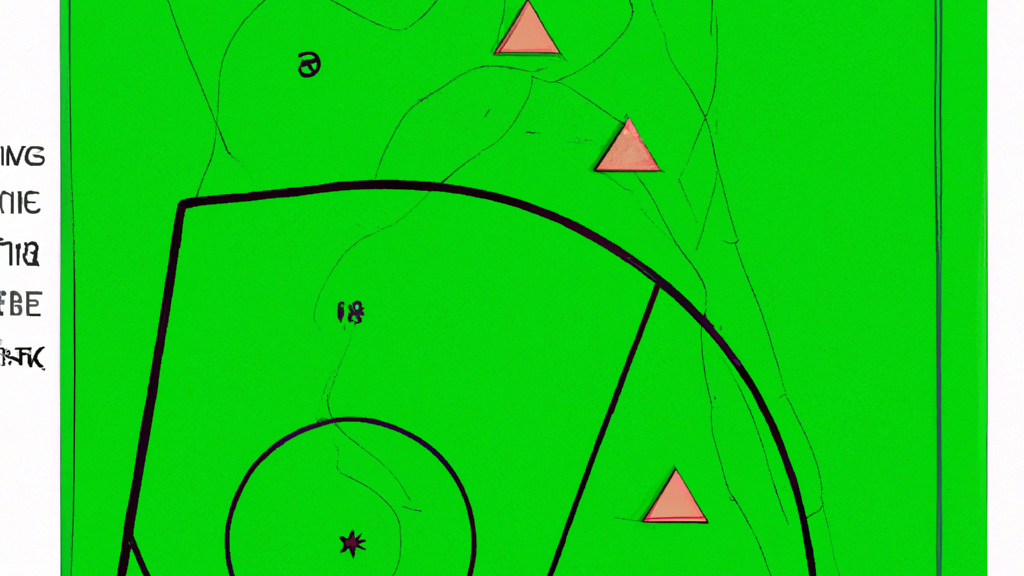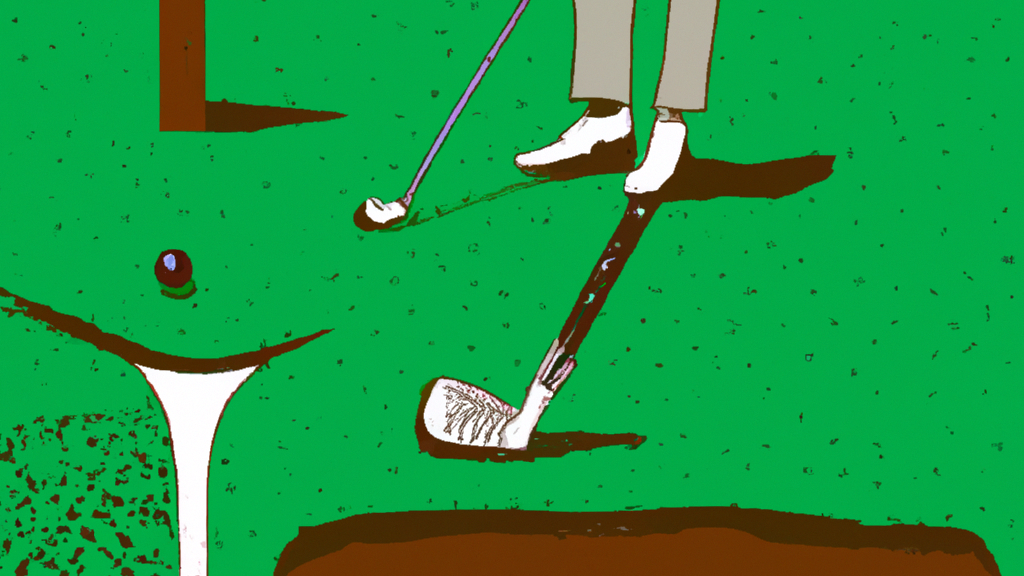HOW TO MANAGE INVASIVE SPECIES ON YOUR GOLF COURSE
Golf courses are a haven for nature lovers, but they can also be a breeding ground for invasive species that can wreak havoc on the course’s ecosystem. Invasive species are non-native plants or animals that can cause harm to the environment, economy, or human health. They can quickly spread and outcompete native species, leading to a decline in biodiversity and the overall health of the golf course. As a golf course manager or owner, it’s essential to know how to manage invasive species effectively.
In this blog post, we’ll explore the best practices for identifying, preventing, and controlling invasive species on your golf course. From early detection to proper disposal, we’ll cover everything you need to know to keep your golf course healthy and thriving. So, if you’re ready to take control of invasive species on your golf course, keep reading!

HOW TO MANAGE INVASIVE SPECIES ON YOUR GOLF COURSE
Golf courses are a beautiful and serene place to spend a day, but they are also a prime location for invasive species to thrive. Invasive species are non-native plants, animals, or insects that can cause harm to the environment, economy, or human health. They can quickly take over an area, outcompeting native species and disrupting the delicate balance of the ecosystem. As a golf course manager, it is important to take steps to manage invasive species on your course to protect the environment and maintain the beauty of your course.
Identify Invasive Species
The first step in managing invasive species on your golf course is to identify them. Invasive species can be difficult to spot, as they often blend in with native species. However, there are some telltale signs to look out for. Invasive plants may have leaves or flowers that look different from native plants, or they may grow faster and taller than surrounding plants. Invasive animals may have different behaviors or feeding habits than native animals, or they may cause damage to the environment or structures on the course.
Some common invasive species found on golf courses include:
- Japanese knotweed: This plant grows quickly and can damage structures and infrastructure on the course.
- Phragmites: This tall grass can outcompete native plants and disrupt the ecosystem.
- Emerald ash borer: This insect can kill ash trees, which are common on golf courses.
- Canada geese: These birds can cause damage to the course and spread disease.
Prevention
Preventing invasive species from taking hold on your golf course is the best way to manage them.
There are several steps you can take to prevent invasive species from becoming a problem:
- Use native plants: Native plants are adapted to the local environment and are less likely to be outcompeted by invasive species. Use native plants in landscaping and avoid planting invasive species.
- Clean equipment: Invasive species can be spread through contaminated equipment. Clean equipment thoroughly before and after use to prevent the spread of invasive species.
- Monitor for new species: Keep an eye out for new invasive species on your course. If you spot something new, take action to remove it before it becomes a problem.
- Control erosion: Erosion can create new areas for invasive species to take hold. Control erosion on your course to prevent invasive species from gaining a foothold.
Control
If invasive species do take hold on your golf course, it is important to take action to control them. There are several methods of controlling invasive species:
- Mechanical control: This involves physically removing invasive species from the course. This can be done by hand or with machinery. Mechanical control is effective for small infestations, but may not be practical for larger infestations.
- Chemical control: This involves using herbicides or pesticides to kill invasive species. Chemical control can be effective, but it must be done carefully to avoid harming native species or the environment.
- Biological control: This involves using natural predators or diseases to control invasive species. Biological control can be effective, but it must be done carefully to avoid unintended consequences.
When choosing a method of control, it is important to consider the potential impact on the environment and native species. Chemical control should only be used as a last resort, and should be done by a professional who is trained in the proper use of herbicides and pesticides.
Monitoring
Once you have taken steps to manage invasive species on your golf course, it is important to monitor the situation to ensure that the invasive species do not return. Regular monitoring can help you catch new infestations early and take action before they become a problem.
Monitoring can be done through visual inspections, surveys, or by using technology such as drones or remote sensing. It is important to keep detailed records of your monitoring efforts, including the location and severity of any infestations, the methods used to control them, and the results of those efforts.
Education
Finally, it is important to educate golf course staff, members, and visitors about the importance of managing invasive species. Many people may not be aware of the impact that invasive species can have on the environment, and may inadvertently spread invasive species through their actions.
Educate staff, members, and visitors about the importance of using native plants, cleaning equipment, and reporting any new invasive species they spot. Encourage them to take an active role in managing invasive species on the course.
Conclusion
Managing invasive species on your golf course is an important part of maintaining the beauty and health of your course. By identifying invasive species, preventing their spread, controlling infestations, monitoring the situation, and educating staff, members, and visitors, you can help protect the environment and maintain the beauty of your course for years to come.

- RISE promotes integrated approach to manage invasive species …
Feb 24, 2020 … National Invasive Species Awareness Week shines a light on effort to protect local ecosystems. Mark Heilman (2). Golf Course Industry staff | … - Volunteers Play Key Role in Managing Invasive Plants in County …
Feb 22, 2023 … Fairfax County, Virginia – National Invasive Species Awareness Week offers a perfect opportunity to highlight the outstanding work of … - ParkPlanning – Rehabilitation of the Rock Creek Park Golf Course
NLT is a nonprofit that has a 50-year lease to manage the golf course. The rehabilitation is part of … golf course routing – – Removal of invasive species - Invasive Management Area Program | Park Authority
… Virginia – Volunteers help Fairfax County manage invasive species in parks. … To participate, click on IMA Workday Calendar and sign up for a workday. - Invasive Species – Minneapolis Park & Recreation Board
We’re concerned about invasive species in our park system and use recommendations provided by these agencies to manage invasive species to the best of our … - Nutrient And Pesticide Fate On The Golf Course
Aug 12, 2017 … The Fate of Pesticides and Fertilizers in a Turfgrass Environment … Managing for Invasive Species and Pesticide and Fertilizer Exposure … - 7 Invasive Aquatic Plants In Virginia and the Mid-Atlantic
SOLitude partners with homeowners associations, golf courses, private landowners, businesses and municipalities. SOLitude Lake Management is part of Rentokil, a … - Invasive Species Control | Kent County Parks
Volunteers are needed to assist in habitat preservation by removing invasive species that threaten native environments. Invasive plants, vines and shrubs can … - Nuisance Canada Geese – NYS Dept. of Environmental Conservation
In New York, management responsibility for Canada geese is shared by the U.S. … including areas where geese are a general nuisance (parks, golf courses, … - New York State Integrated Pest Management | CALS
Mar 30, 2023 … NYSIPM. On farms, vineyards, orchards; in schools, nursing homes, playgrounds; in your own home, lawn, or garden—IPM is foundational to …
The lesser-known side of How to Manage Invasive Species on Your Golf Course
- Golf originated in Scotland in the 15th century and was originally played on rough terrain using a wooden ball.
- The first golf club was formed in Edinburgh, Scotland, in 1744.
- The Masters Tournament is one of the most prestigious golf tournaments and has been held annually at Augusta National Golf Club since 1934.
- Professional golfer Tiger Woods has won a total of 82 PGA Tour events, tying him with Sam Snead for the most wins ever recorded by a professional golfer.
- In addition to physical skill, mental toughness is also important for success in golf as players must remain focused and calm under pressure.
- Many famous celebrities are avid golfers including Justin Timberlake, Bill Murray, and Samuel L Jackson who even owns his own course!
- Golf courses can vary greatly depending on their location with some courses being built into mountains or along coastlines while others are situated within urban areas or deserts.





